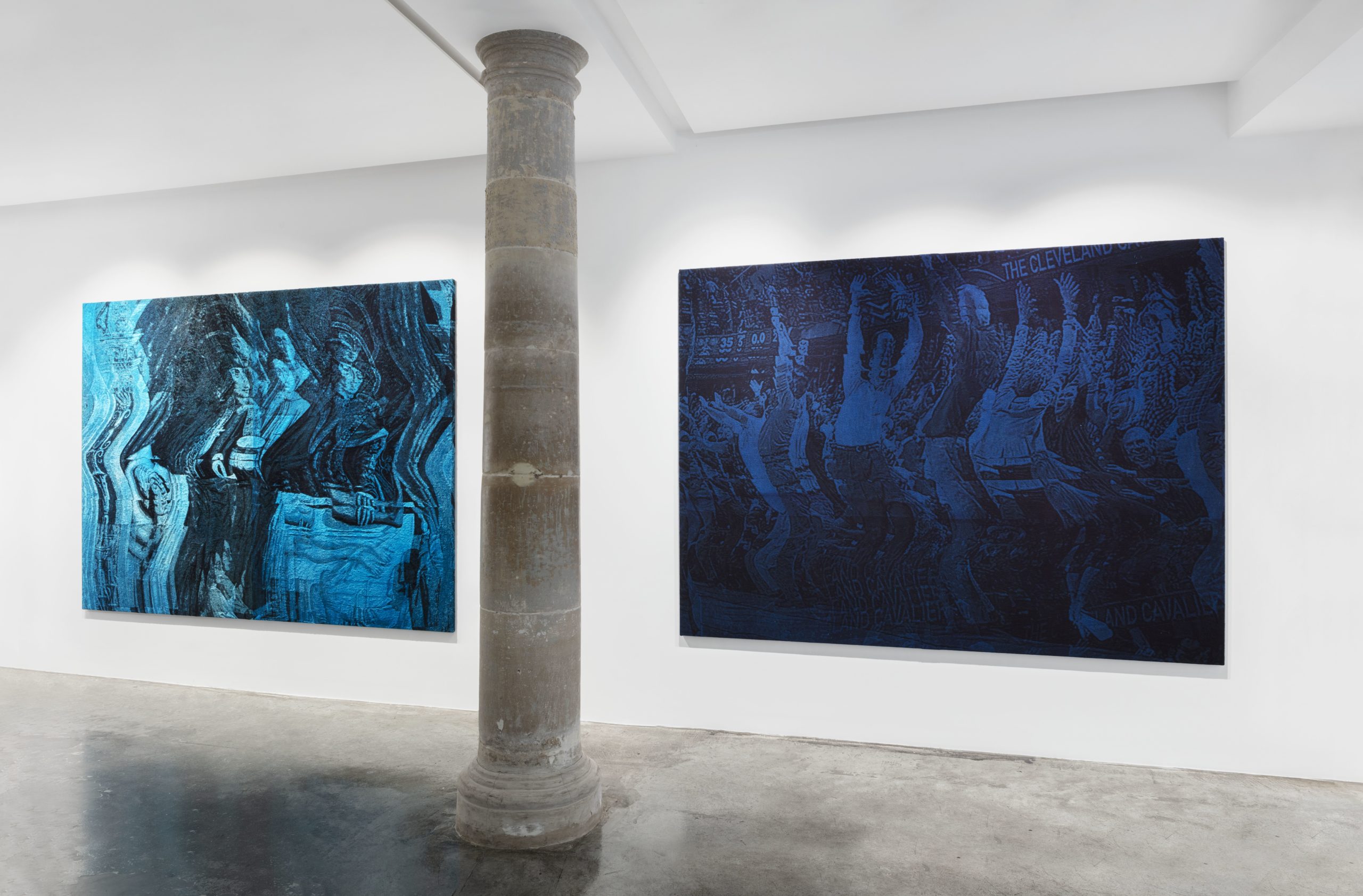
PRESS RELEASE
In Blue Fur is an attempt at suturing multiple histories, all of which share a curious relationship to the capture, cooptation and possession of black performance: Anderson aims to explore its racial, cultural, historical, and political implications. It starts in a dark age and draws from medieval illustrations, in which Anderson reads an expression of corporeal capture and cultural possession of blackness. His technique reproduces some of these illustrations in cotton tapestry and hand dyes them in a brilliant turquoise bath: blue is at the core of Anderson’s exploration of his medium. He employs the history of Jacquard tapestry making – specifically English mathematician Charles Babbage’s use of the medium’s binary codes to construct what most consider as the origin of computers and television – to explore the site in which black performers are generally visible: the screen. Once the tapestries dry, they are distressed, causing the cotton threads to turn fuzzy and softening the image. Through this frame, comic images of the famous basketball group, the Harlem Globetrotters, allow Anderson to provide a counter-performance to the medieval narrative grounding the show. For the artist basketball is an available format through which to explore African American performance. In the artist’s words, “As Jasper Johns gives his audience a familiar image in the American flag to take them somewhere, I use recognizable images to get my audience to seriously consider what tapestries can be made to do, and how they can transform the viewer.”
In a signature piece in the show, Medieval Televangelist, Anderson weaves a copy of the Master of Los Balbases’s A Verger’s Dream: Saints Cosmas and Damian Performing a Miraculous Cure by Transplantation of a Leg (1495), where the two saints miraculously transplant the leg of a recently deceased Ethiopian man onto the body of a white christian official with a diseased leg. Drawing from Golden Legend – a 13th century collection of 153 hagiographies about the legendary lives of medieval saints – Medieval and Renaissance European artists saw this image as a testament to God’s power by suturing the dead black leg to the lacking white body. Anderson reads it as an expression of capture and cooptation and interprets the narrative as supporting an image of possessing blackness, corporeally and culturally. In a miraculous act of transubstantiation, Anderson’s new technique of dying and softening the surface equally attenuates the charge of the “religio-medical” echo of the capture and cooptation of blackness.

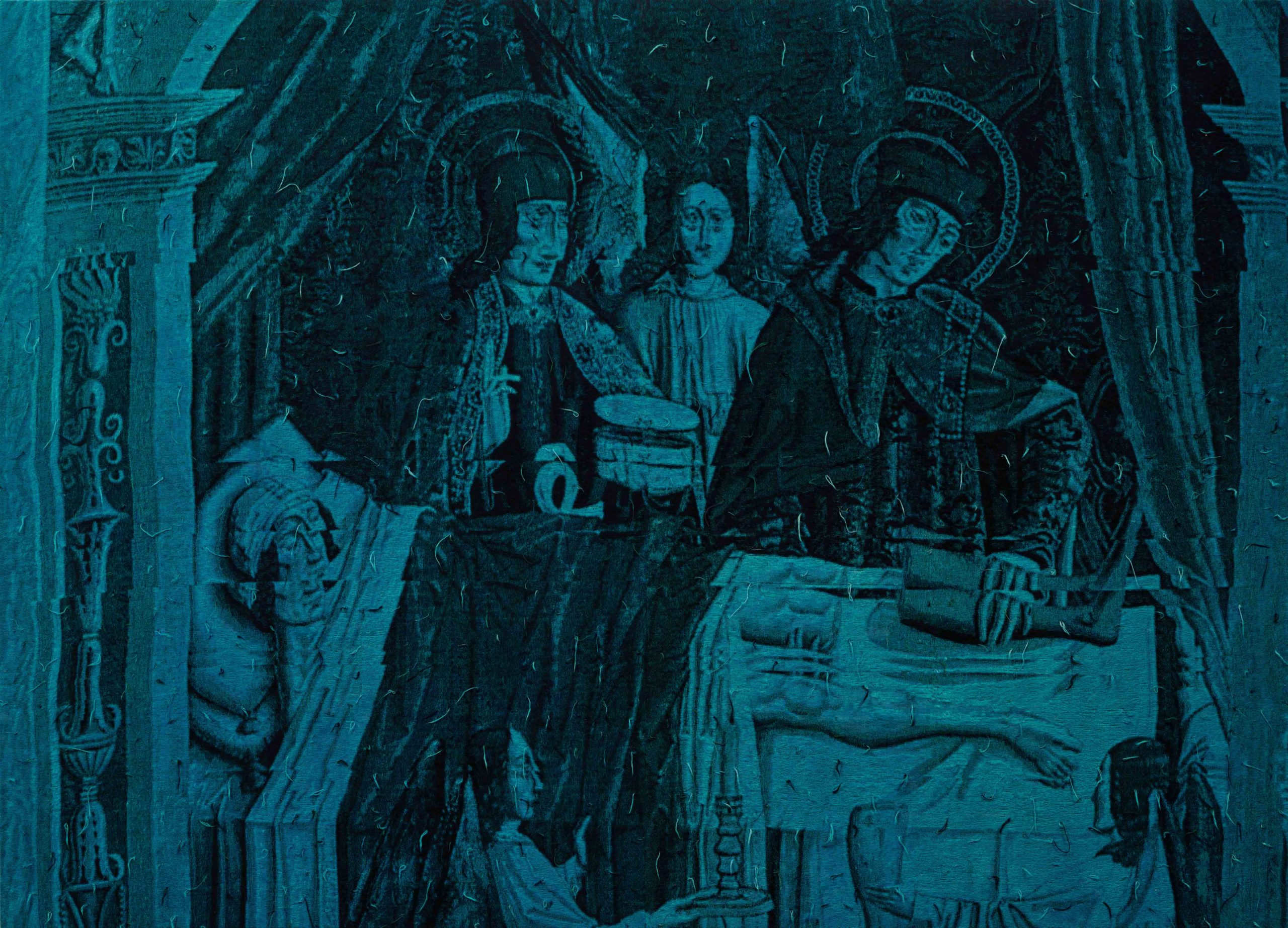
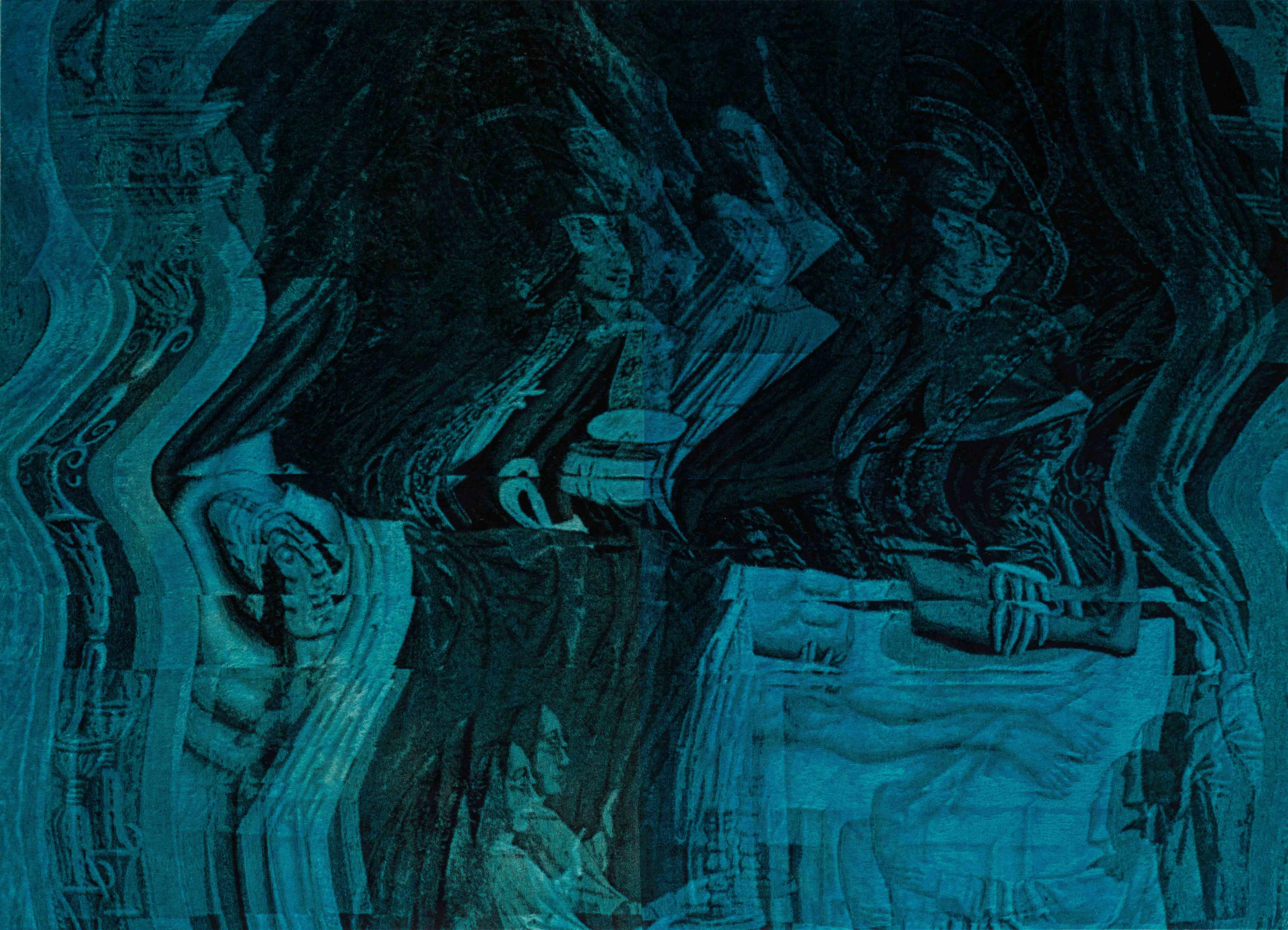
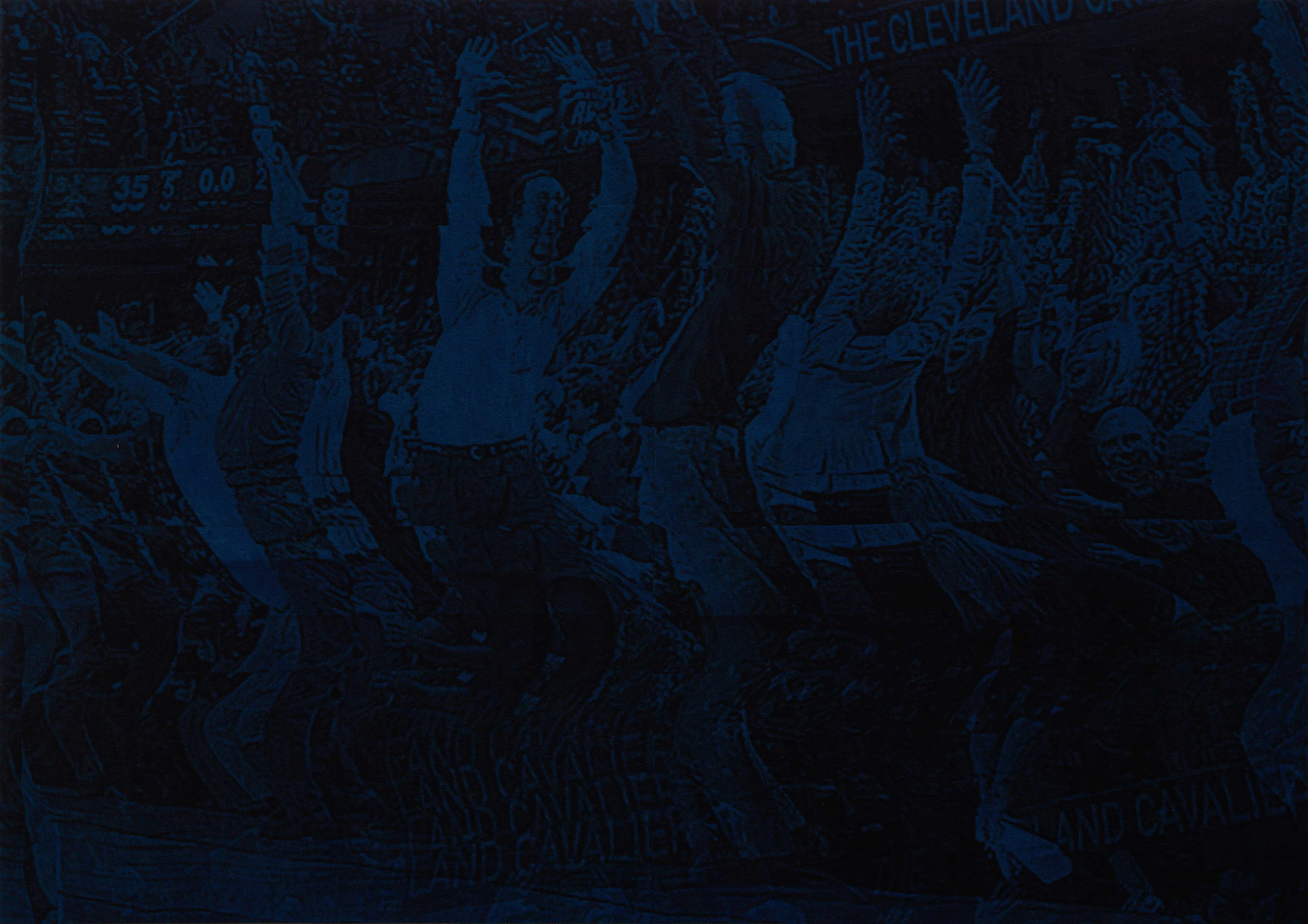
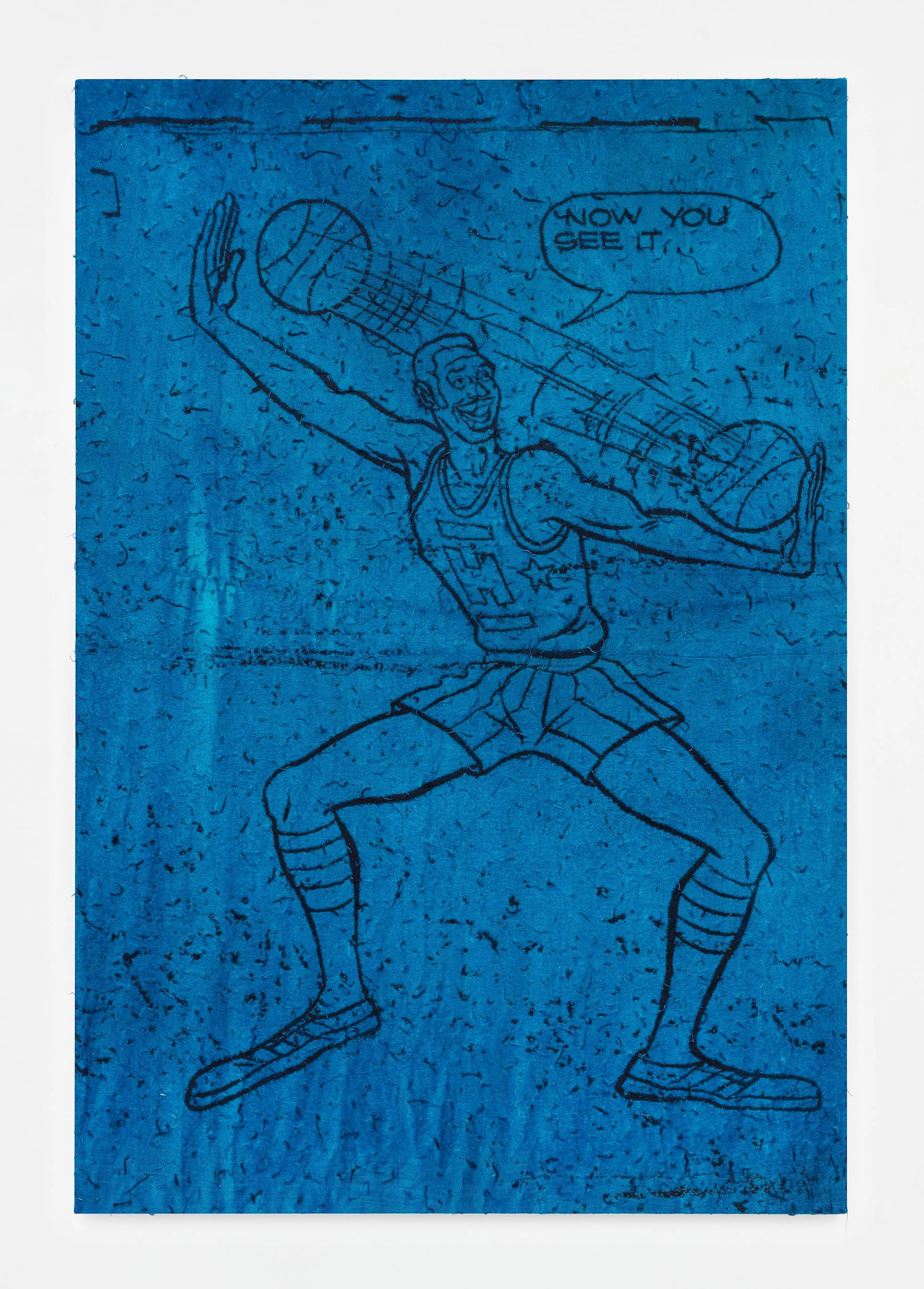
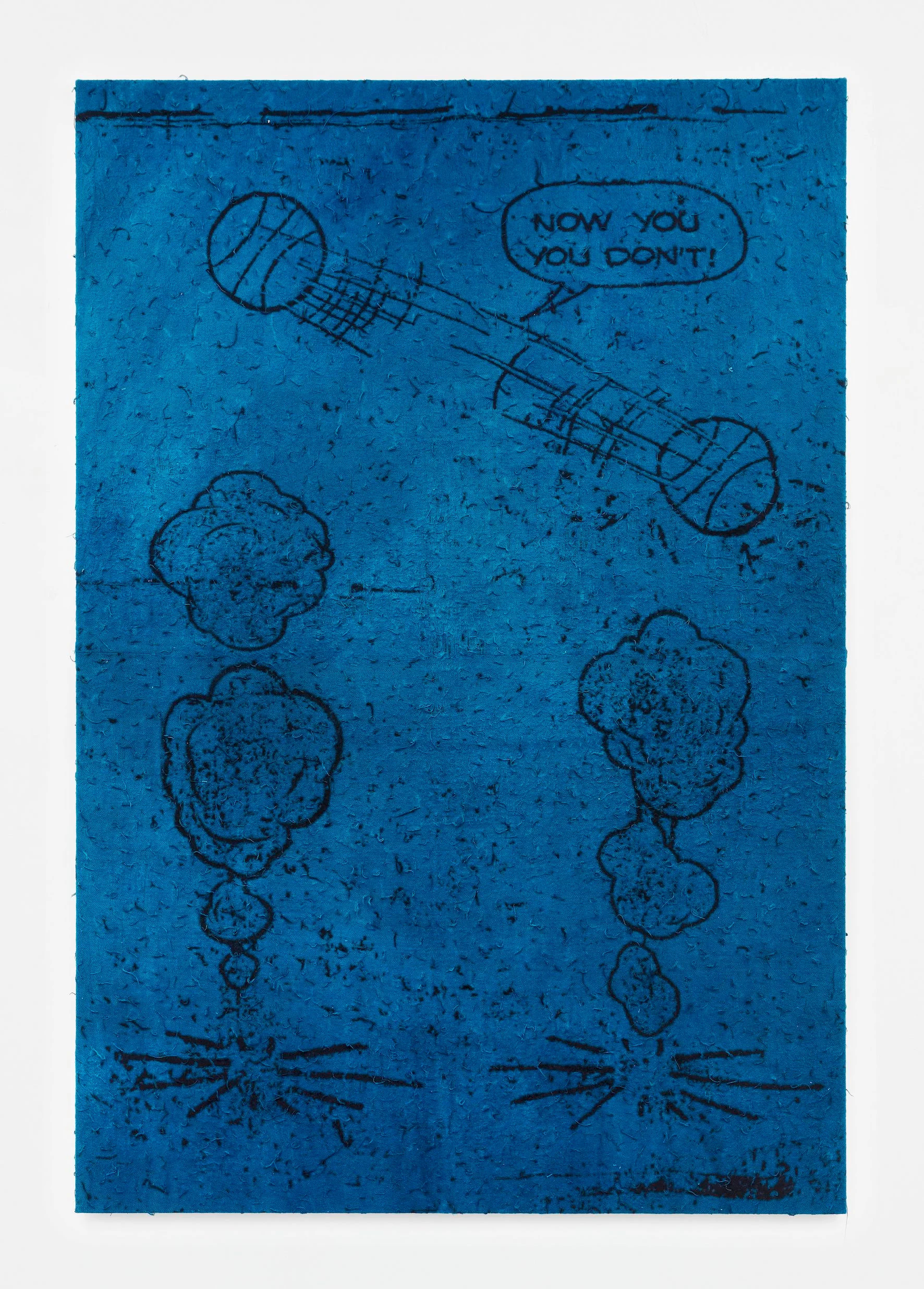
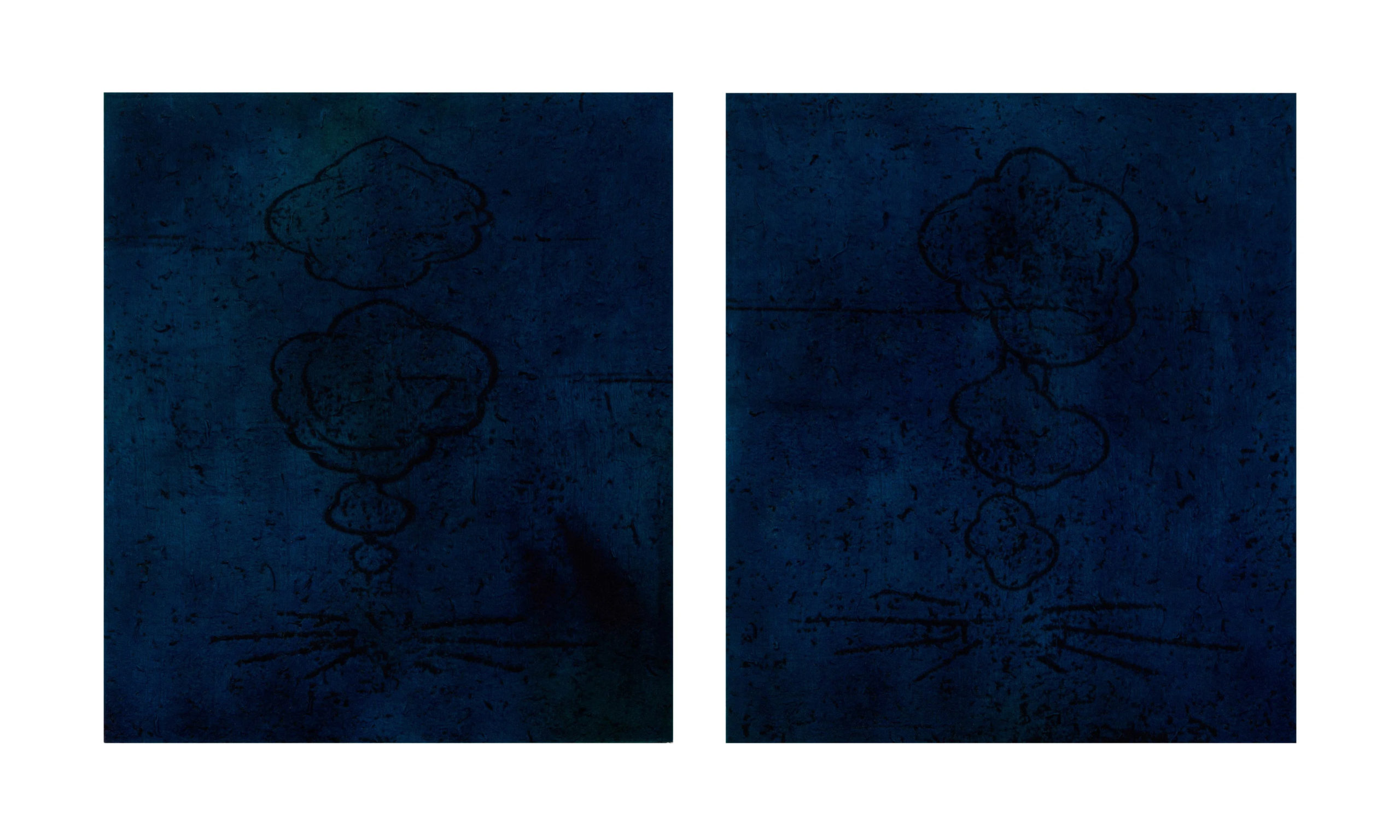
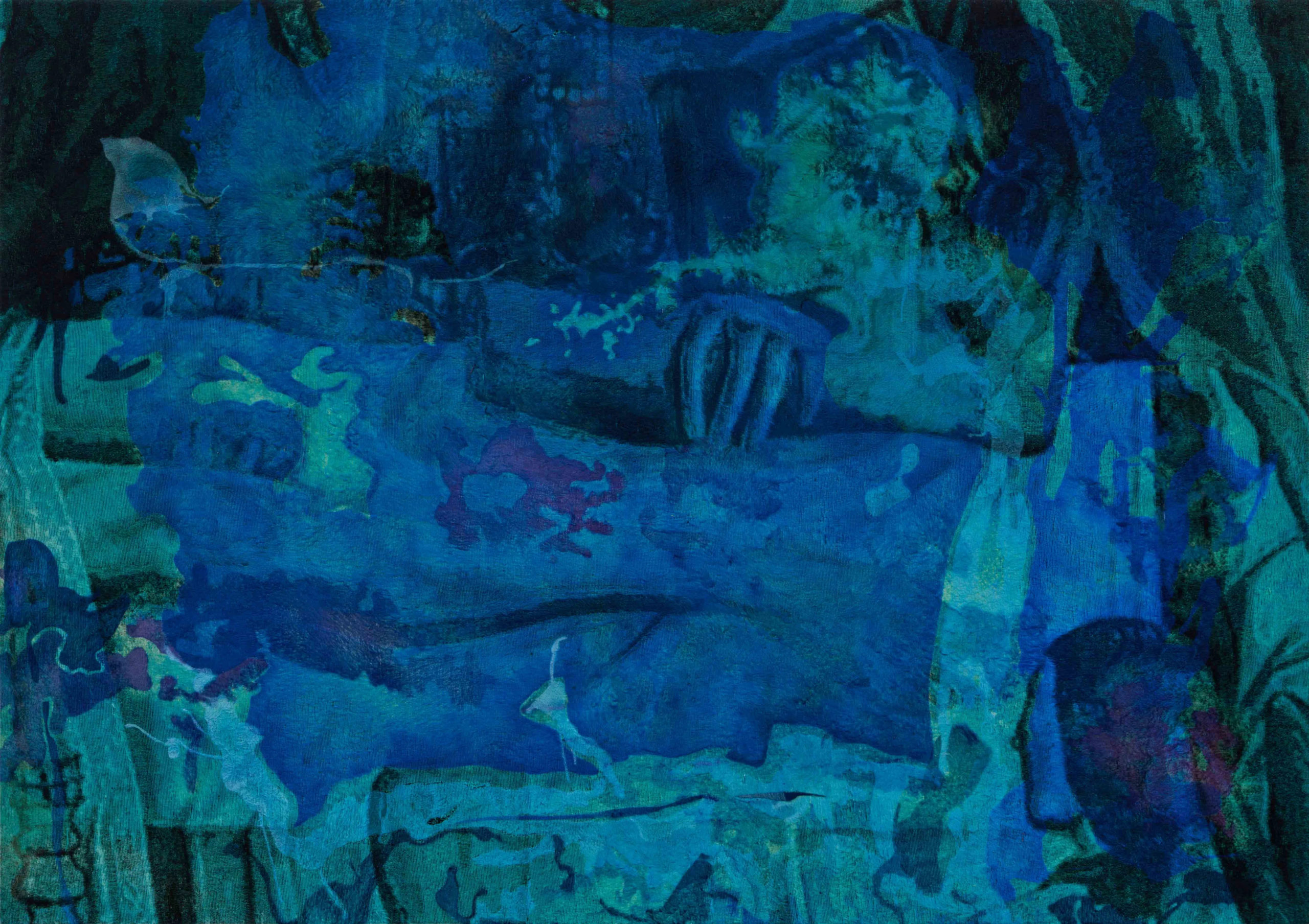
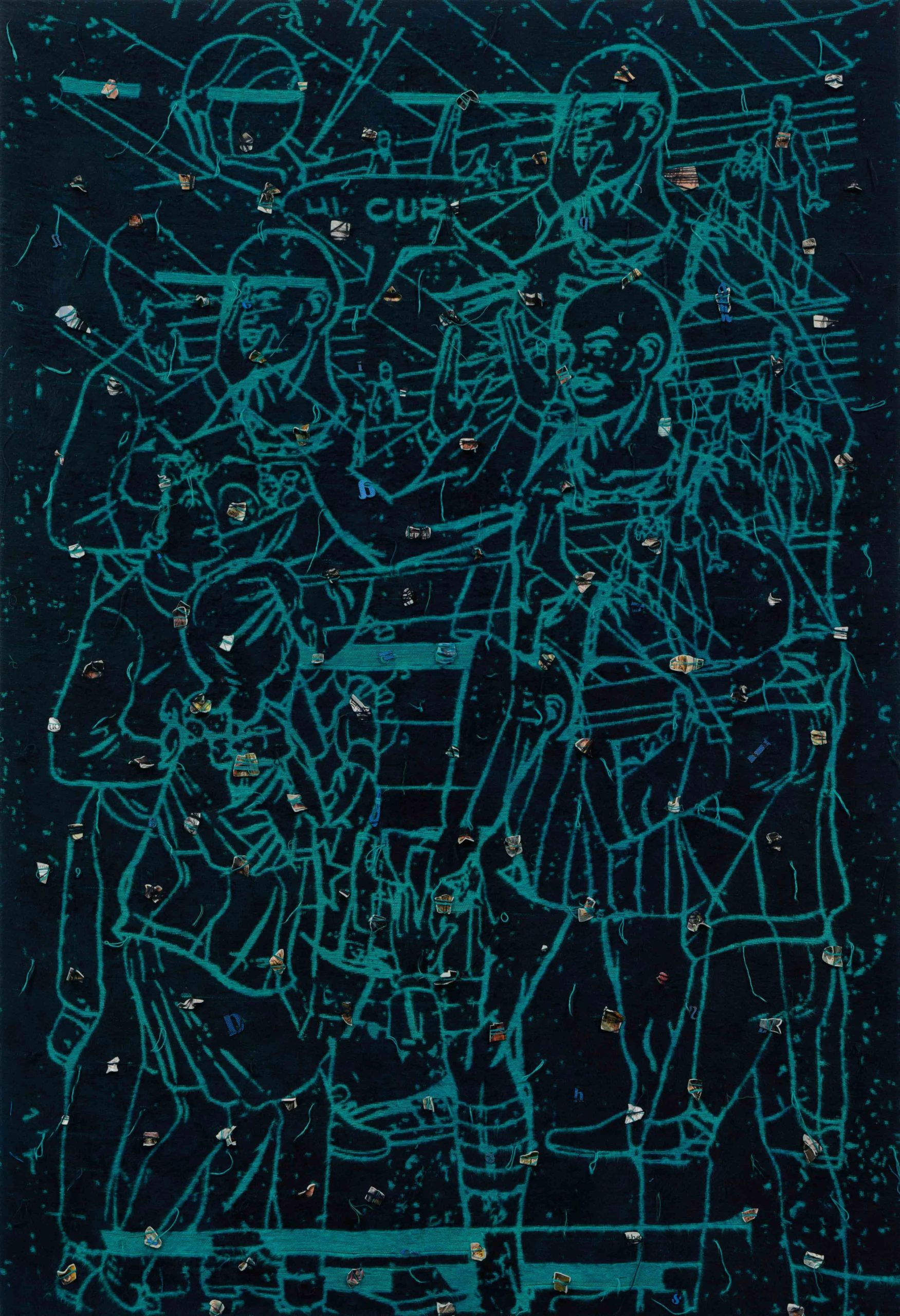
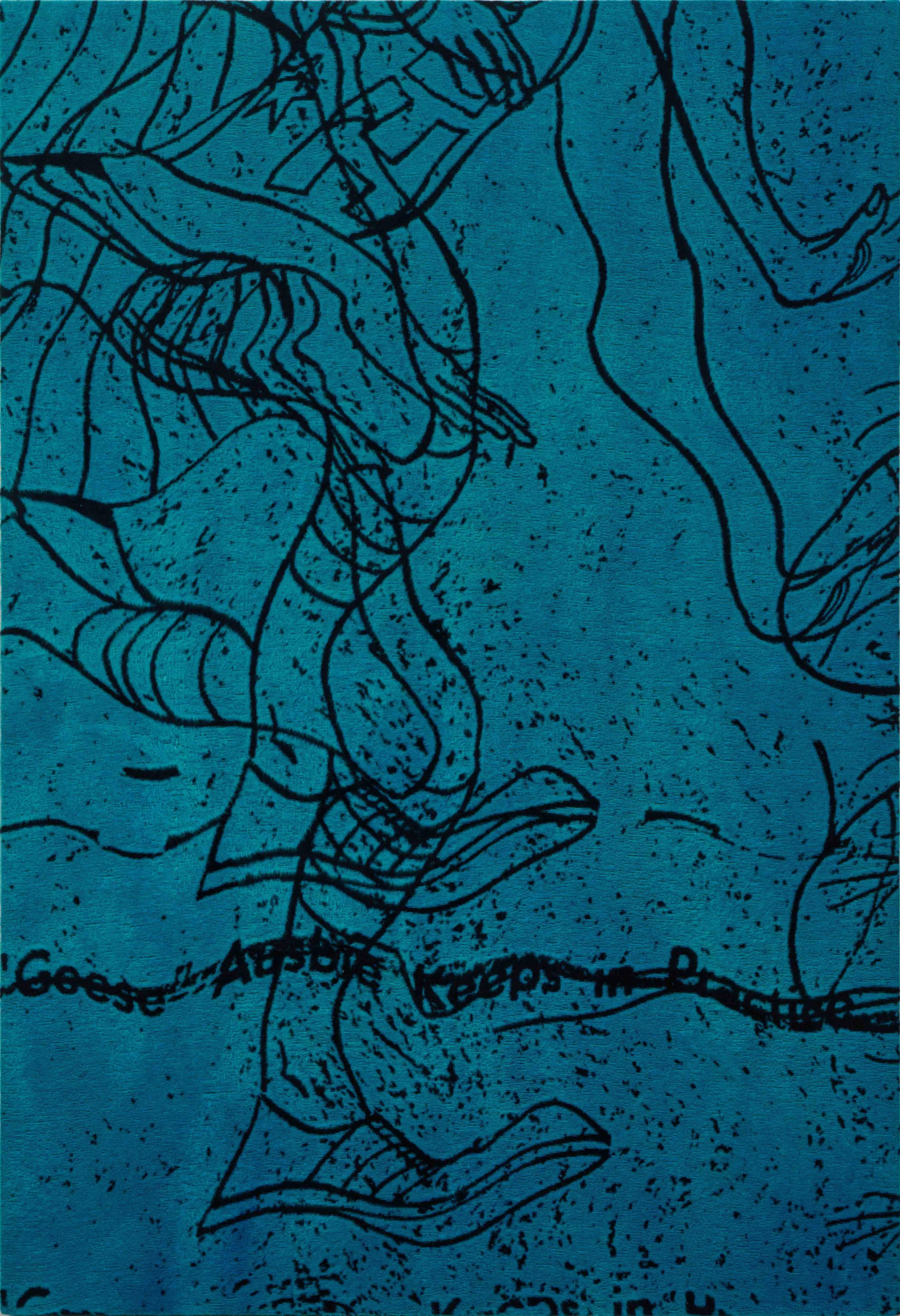
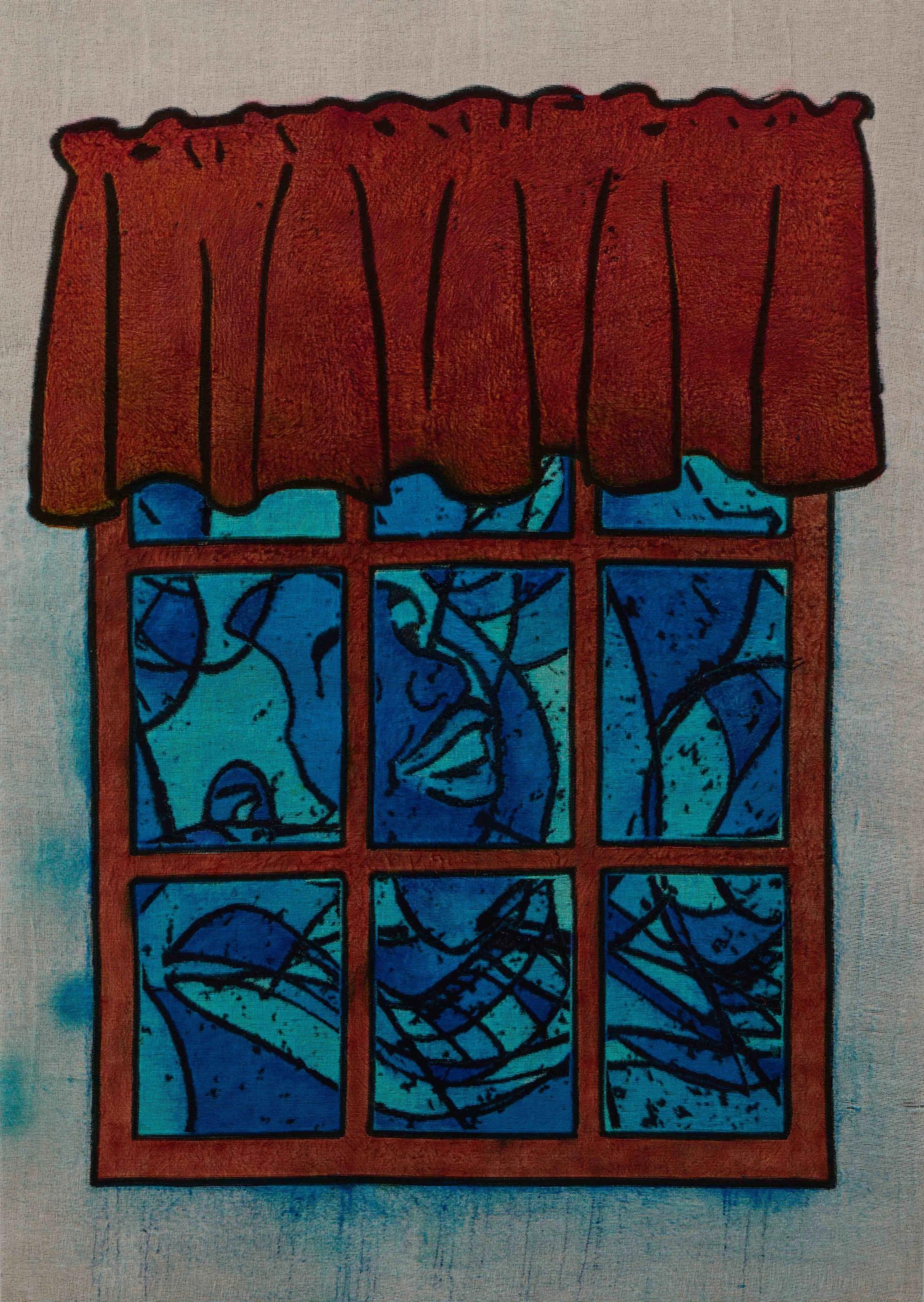
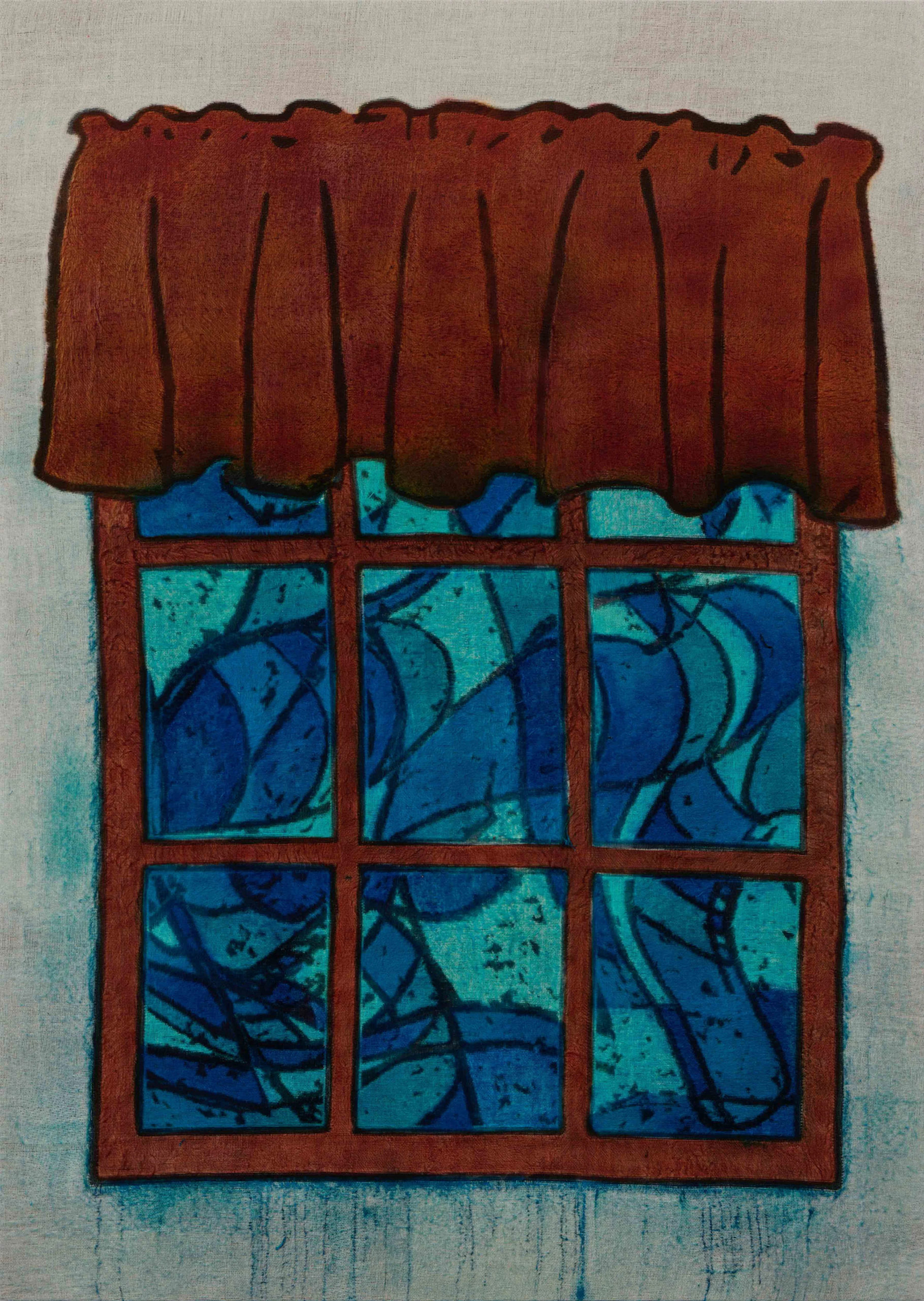
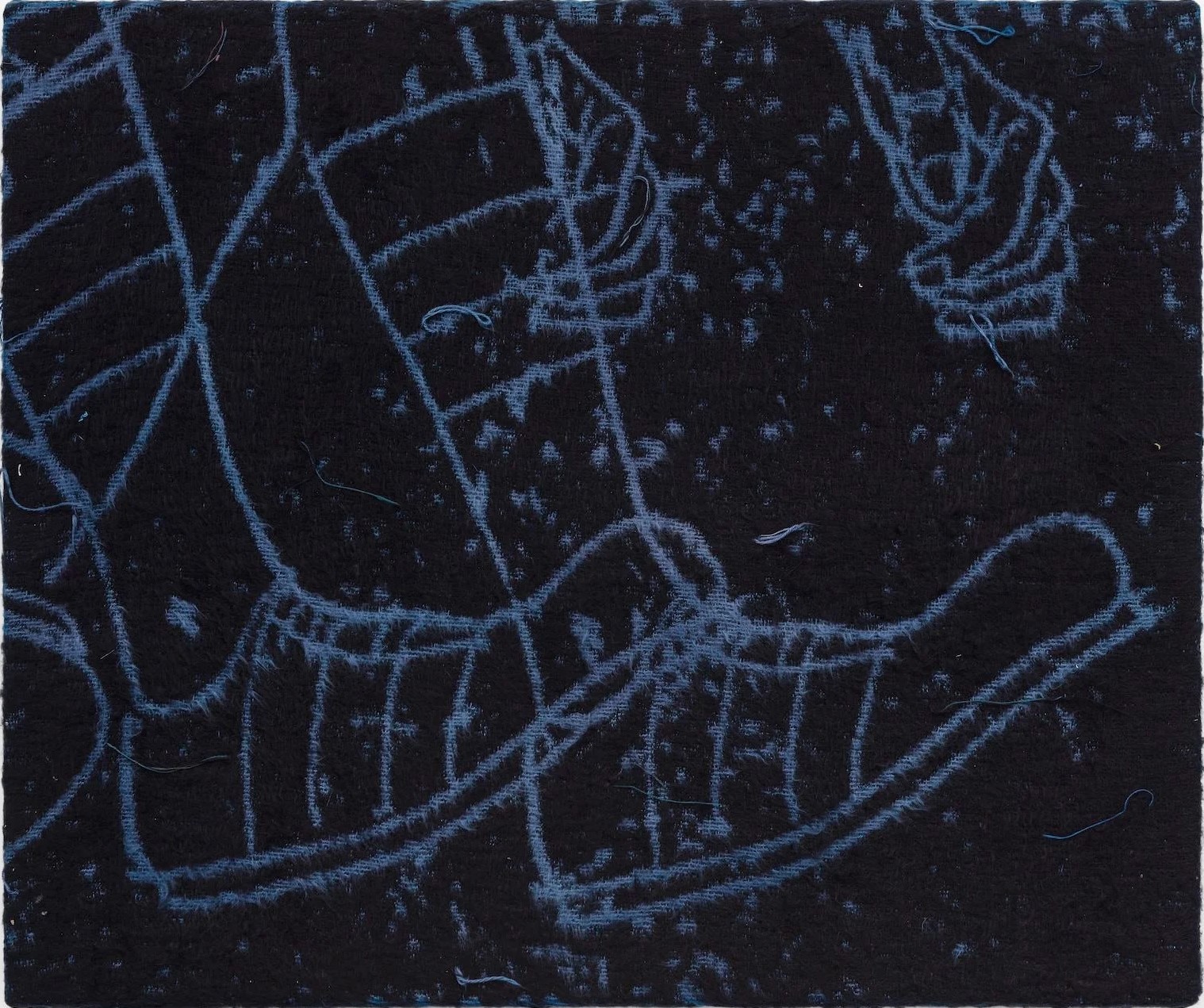
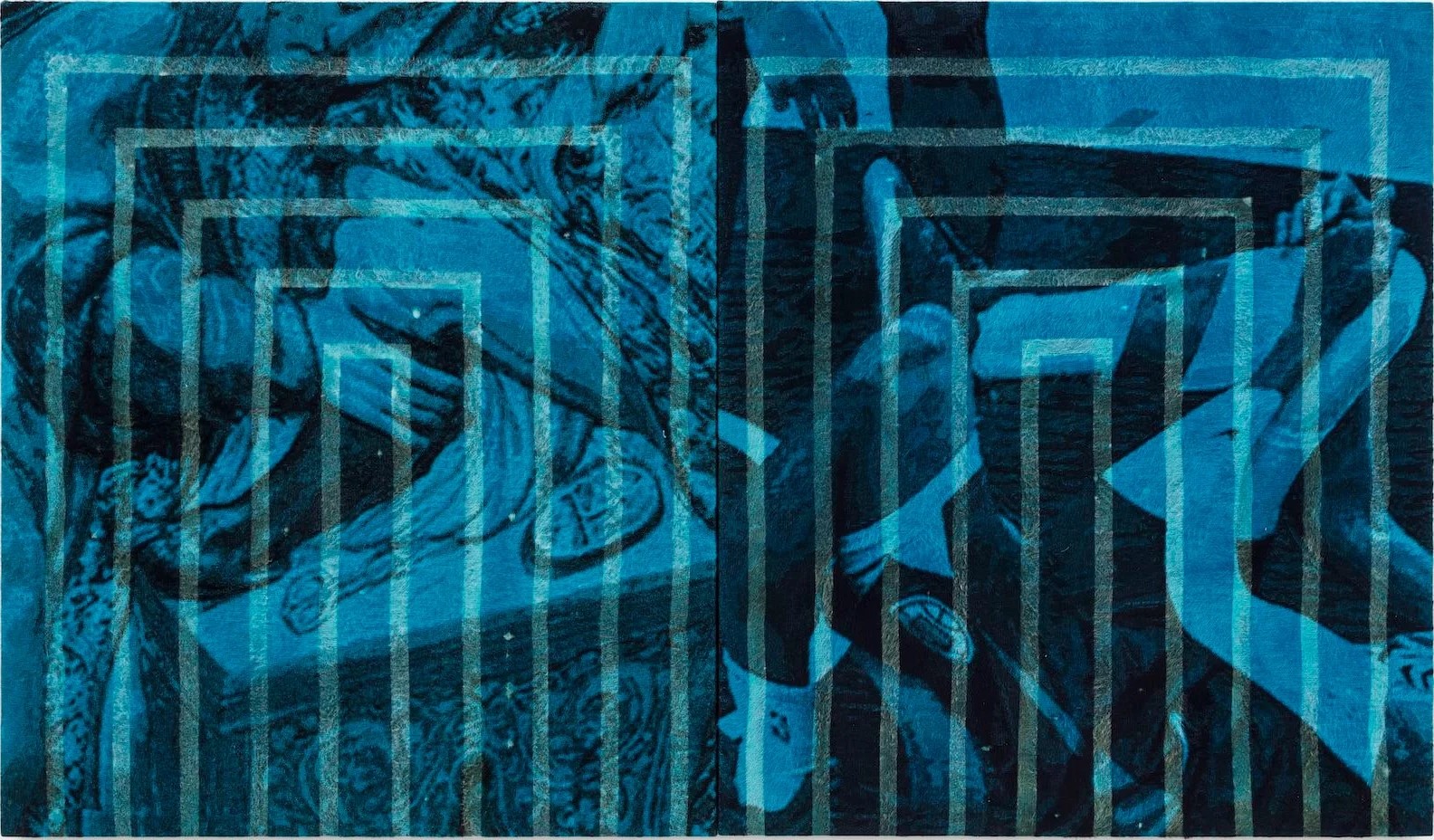
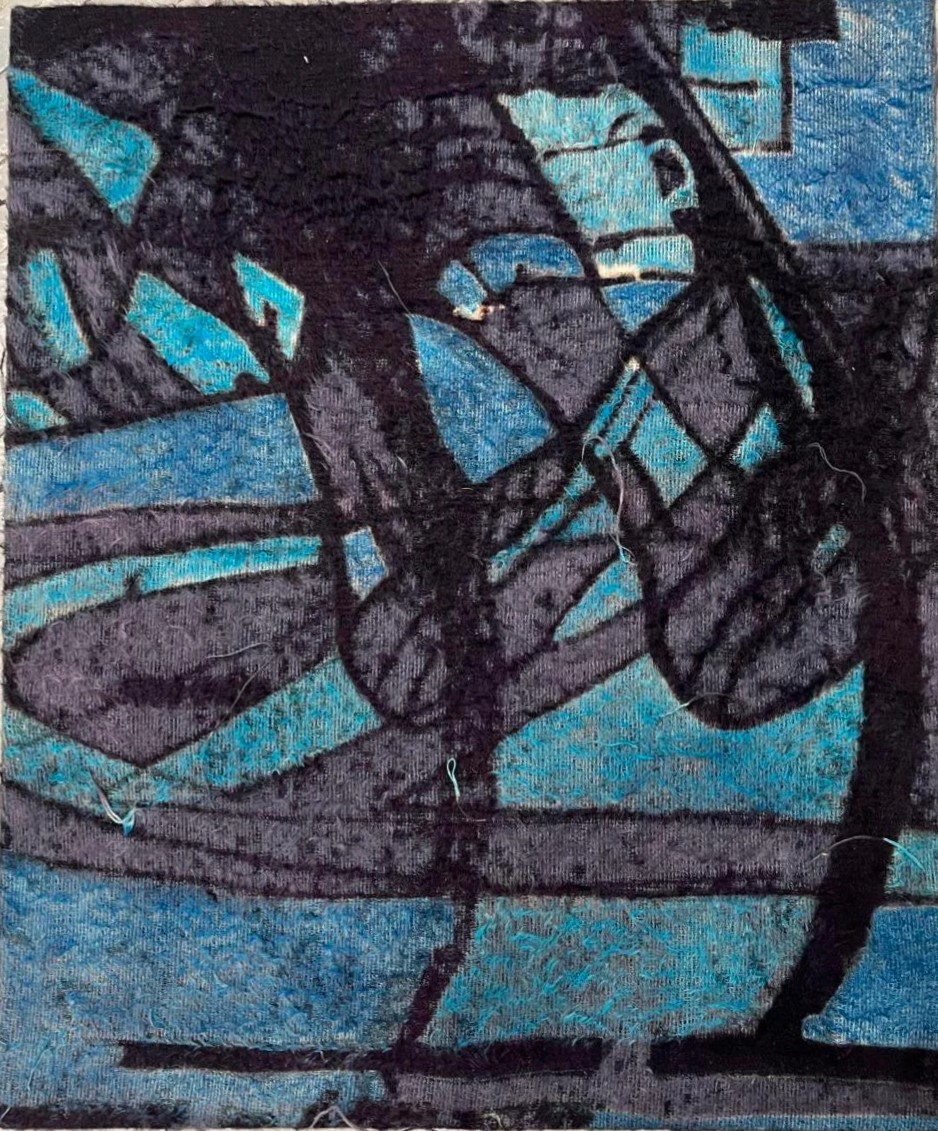

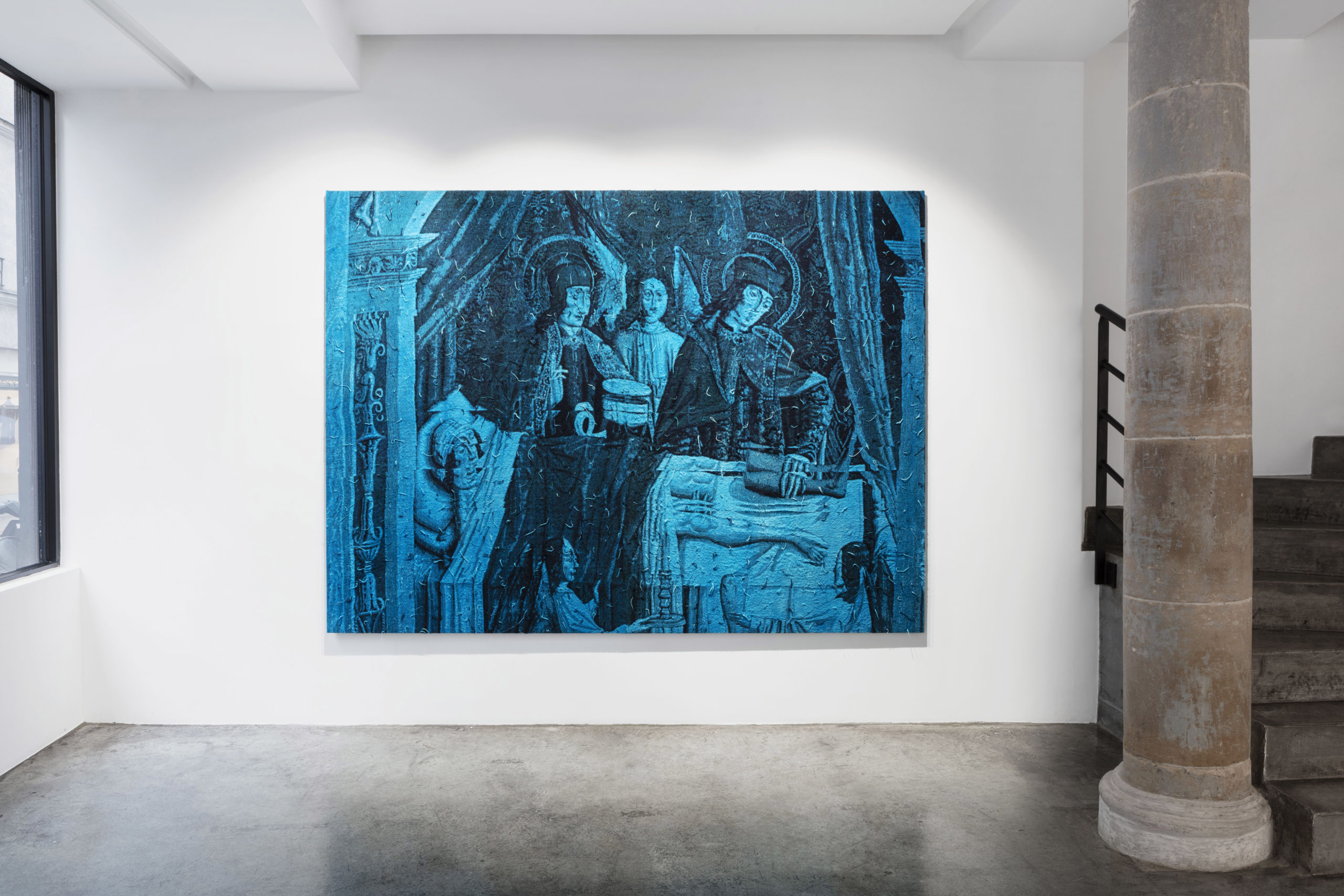

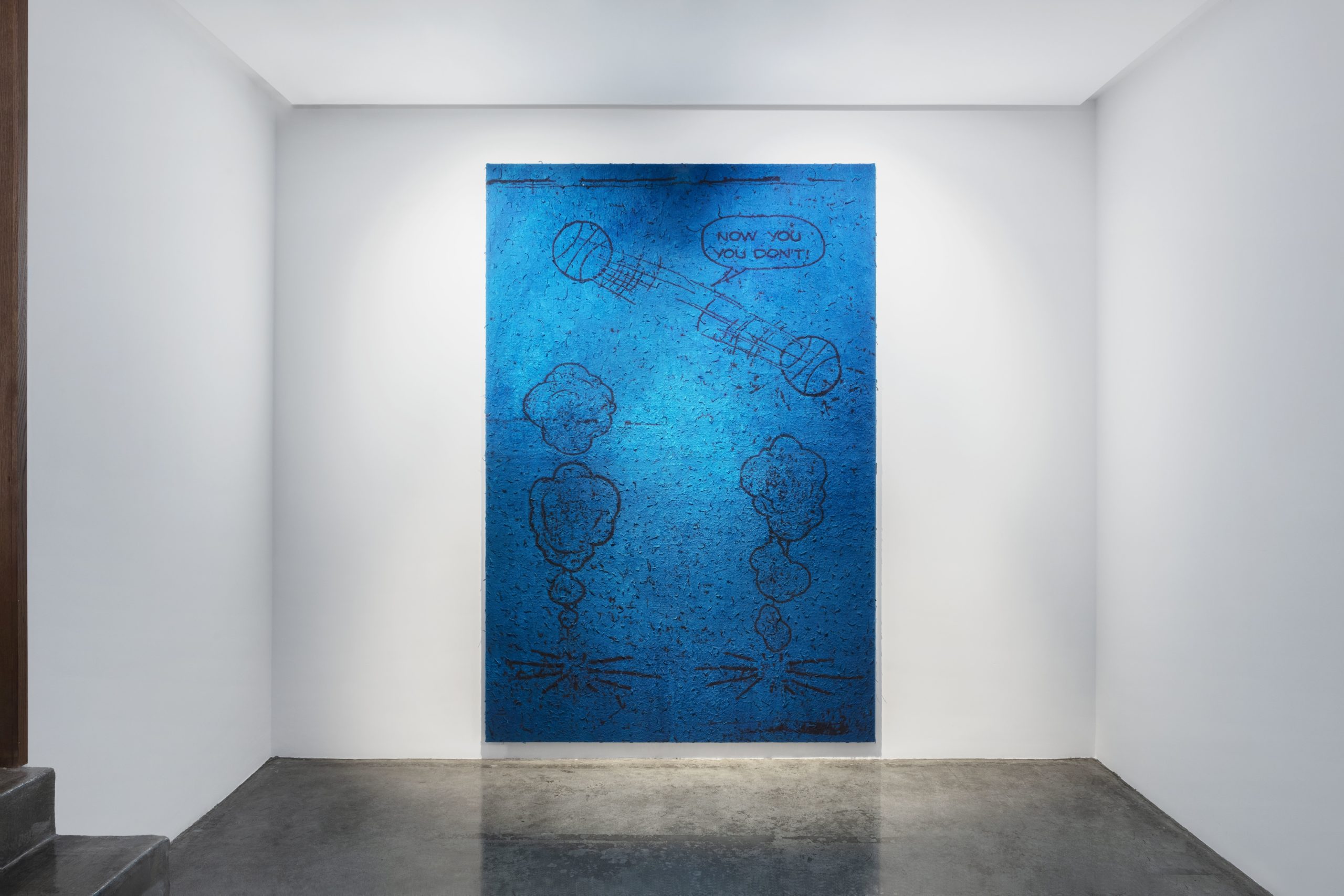

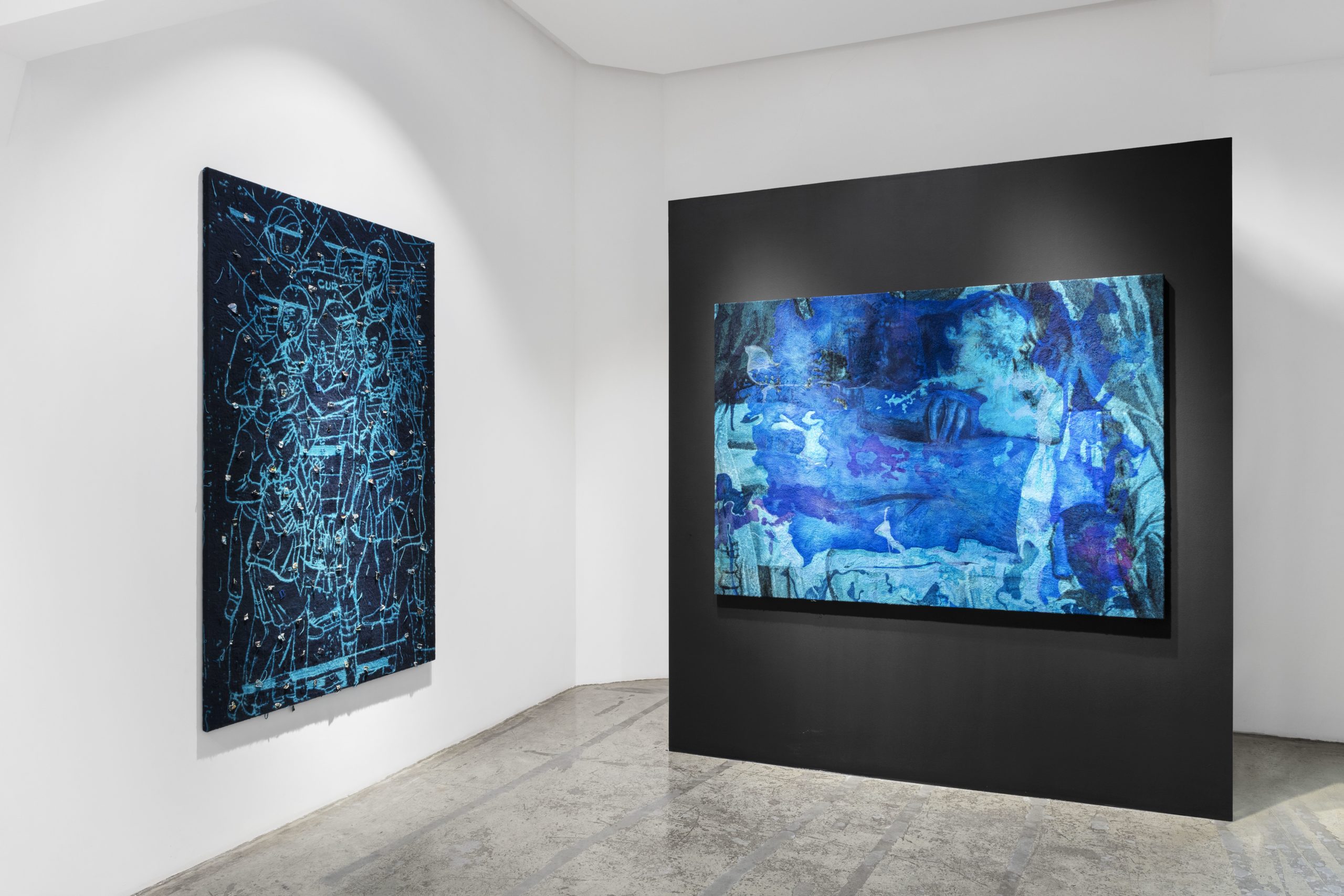

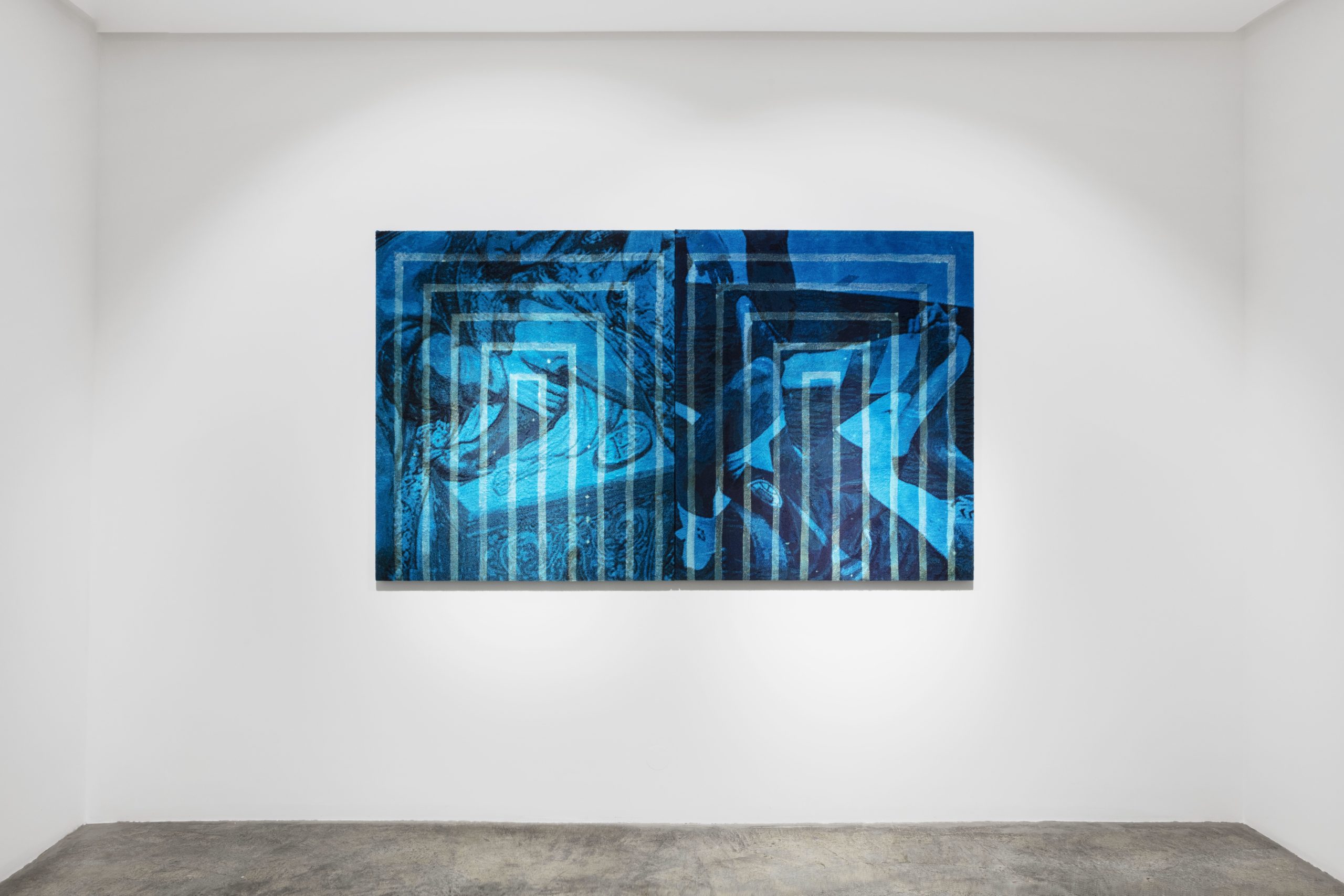



 UP
UP